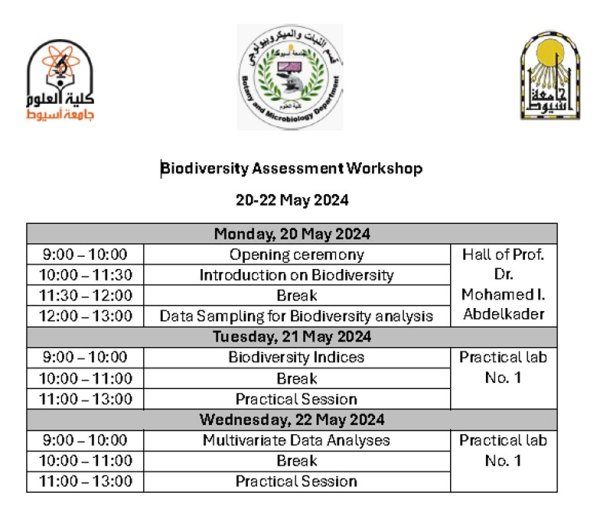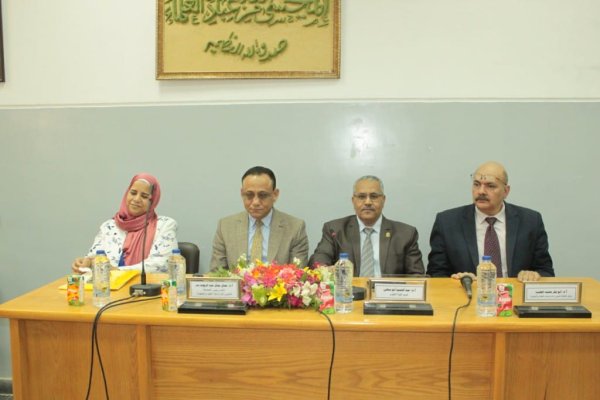

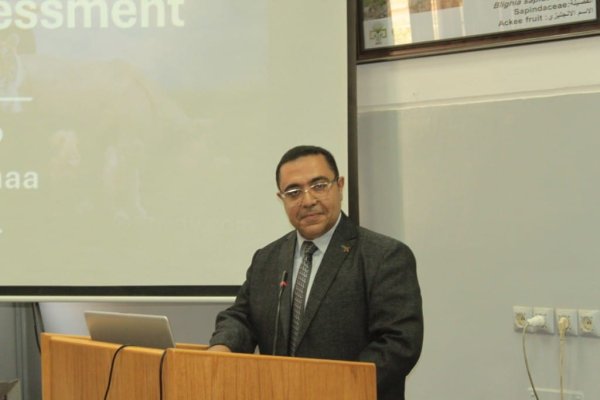
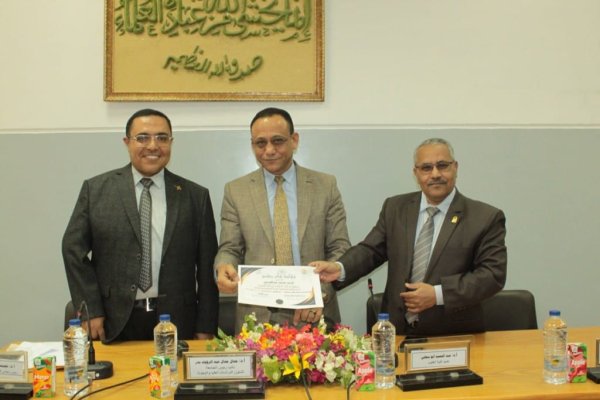

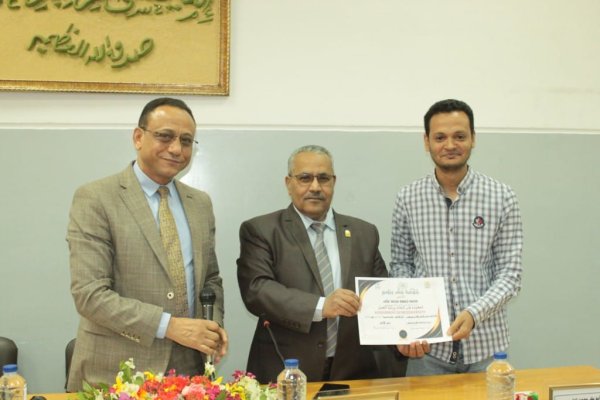

The Role of Ytterbium (Yb2O3) in the Radiation Shielding Properties of Barium Titanium Borate Glasses (B2O3-TiO2-BaO) in Terms of γ and β Radiations
"Biodiversity Assessment Workshop"
Biodiversity Assessment Workshop 20-22 May 2024
Designing strategically functionalized conjugated microporous polymers with pyrene and perylenetetracarboxylic dianhydride moieties with single-walled carbon nanotubes to enhance supercapacitive energy storage efficiency
We utilize straightforward and traditional Sonogashira coupling reactions to synthesize two conjugated microporous polymers linked with pyrene (referred to as PyT-PTCDA and PyT-PHTD CMPs) by combining the common precursor of 1,3,6,8-tetraethynylpyrene (PyT) with 1,7-dibromo-3,4,9,10-perylenetetracarboxylic dianhydride (PTCDA-Br2) and 3,6-dibromophenanthrene-9,10-dione (PHTD-Br2). Various analytical techniques, including spectroscopy and microscopy, are employed to characterize these two PyT-CMP materials. The PyT-PTCDA CMP exhibits notable thermal stability (with a decomposition temperature of 351 ◦C and a char yield of 61 wt %). We combine the PyT-PTCDA and PyT-PHTD CMPs with exceptionally conducting single-walled carbon nanotubes (SWCNTs) through π-π stacking interactions between SWCNTs and PyT unit to improve their electrical conductivity and electrochemical performance. Electrochemical evaluations reveal that the PyT-PTCDA CMP/SWCNTs nanocomposite shows an impressive capacitance of 376 F g- 1 (at 0.5 A g- 1) in a three-electrode system. After undergoing 5000 cycles of charging and discharging, it maintained 98 % of its original capacitance while demonstrating an energy density of 52 Wh/kg. Additionally, in a symmetric coin cell system, the energy density is 17 Wh/kg and the capacitance is 119 F g- 1 for PyT-PTCDA CMP/SWCNTs. This approach presents a promising avenue for developing high-performance supercapacitors by strategically blending PyT-CMPs with highly conductive SWCNTs.
[HTML] from nature.com Covalently anchoring silver nanoclusters Ag44 on modified UiO-66-NH2 with Bi2S3 nanorods and MoS2 nanoparticles for exceptional solar wastewater
For the first time, covalently anchoring size selected silver nanoclusters [Ag44(MNBA)30] on the Bi2S3@UiO-66-NH2 and MoS2@UiO-66-NH2 heterojunctions were constructed as novel photocatalysts for photodegradation of methylene blue (MB) dye. The anchoring of Ag44 on MoS2@UiO-66-NH2 and Bi2S3@UiO-66-NH2 heterojunctions extended the light absorption of UiO-66-NH2 to the visible region and improved the transfer and separation of photogenerated charge carriers through the heterojunctions with a unique band gap structure. The UV–Vis-NIR diffuse reflectance spectroscopic analysis confirmed that the optical absorption properties of the UiO-66-NH2 were shifted from the UV region at 379 nm to the visible region at ~ 705 nm after its doping with Bi2S3 nanorods and Ag44 nanoclusters (Bi2S3@UiO-66-NH-S-Ag44). The prepared Bi2S3@UiO-66-NH-S-Ag44 and MoS2@UiO-66-NH-S-Ag44 …
In-situ preparation of sulfonated carbonaceous copper oxide-zirconia nanocomposite as a novel and recyclable solid acid catalyst for reduction of 4-nitrophenol
The missing-linker defects of UiO-66 were exploited to covalently anchor Cu nanoclusters (Cu/UiO-66). The molecular interactions between the metals and oxides as copper-zirconia interfaces in Cu/UiO-66 are essential for heterogeneous catalysis, leading to remarkable synergistic impacts on activity and selectivity. Homogeneously distributed carbonaceous mixed metal oxides (CuO/ZrO2@C) nanocomposite was prepared via carbonization of the Cu/UiO-66 at 600 °C for 3 h in air. To enhance the acidity properties of the CuO/ZrO2@C nanocomposite, a small amount of sulfuric acid was added and heated at 150 °C under an N2 atmosphere (CuO/ZrO2-SO3H@C). The synthesised Cu/UiO-66 and CuO/ZrO2-SO3H@C catalysts were used as novel catalysts in the reduction of 4-nitrophenol (4-NP) to 4-aminophenol (4-AP). The Cu/UiO-66 and CuO/ZrO2-SO3H@C catalysts displayed complete conversion of the 4-NP …
Tailoring the Optical Properties of Polyvinyl Alcohol/ Carboxymethyl Cellulose/Polyvinyl Pyrrolidone Blend Films Using Laser Irradiation for Their Application in Optoelectronic Devices
Distribution dynamics of fisher and Wigner–Yanase information correlations of two qubits coupled to an open superconducting cavity
In this paper, we explore distribution dynamics of two-qubit Fisher and skew information
correlations of a dissipative microwave cavity ¯eld interacting with two charged superconducting
qubits. Besides the negativity function, non-classical correlations beyond entanglement
are studied using local quantum Fisher information (LQFI) and local quantum
uncertainty (LQU). We ¯nd that the two-qubit non-classical correlations are sensitive to
qubit{qubit distribution angle, two-qubit dissipation parameter, and initial coherent state intensity.
The phenomena of frozen quantum correlations, sudden death or birth, as well as
revival dynamical maps are feasible in the current two-qubit state when exposed to a microwave
cavity. The non-classical correlations and entanglement have been found damped under the
two-qubit dissipation appearance in the ¯eld. For the increasing strength of coherence intensity
of the ¯eld, the two-qubit non-classical correlations functions remain to emerge quickly and
oscillate with higher frequency, although with the least amplitudes. Interestingly, unlike the
non-classical correlations, negativity does not emerge against higher coherence strengths of the
cavity and remains completely zero. Finally, for the least dissipation and higher coherence
strength, one can readily generate non-classical two-qubit states employing a microwave cavity.
The effect of intrinsic decoherence on the dynamics of an Ξ-Type qutrit system interacting with a coherent field
This paper solves milburn’s intrinsic noise (IN) model for a 3-level atom of anΞ-type interacting with
a coherent cavity field via multiphoton transitions. Therefore, the effects of the intrinsic noise and the
multi-photon interactions are investigated for some quantum phenomena, such as total correlation,
entanglement, and atomic inversion. In general, we found that the collapse-revival phenomenon
occurs during the oscillatory behaviour of atomic population dynamics. In addition, the birth-death
phenomenon is observed in the negativity dynamics. Entropy, negativity, and mutual information
have various dynamics. It is found that, as the entropy increases, the negativity and mutual
information diminish to stationary levels. When intrinsic noise is considered, all the phenomena of
atomic inversion, entropies, negativity and mutual information exhibit high sensitivity to high
intrinsic noise values, except the mutual information dynamics, which is more resistant than that of
the other quantifiers.




